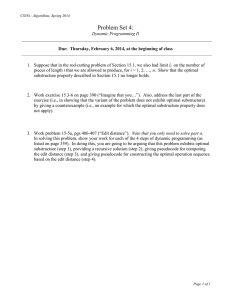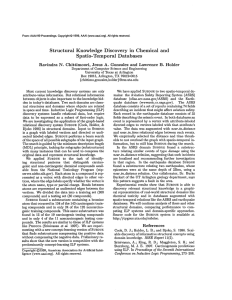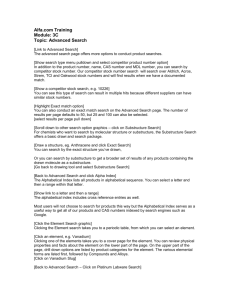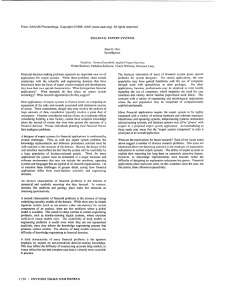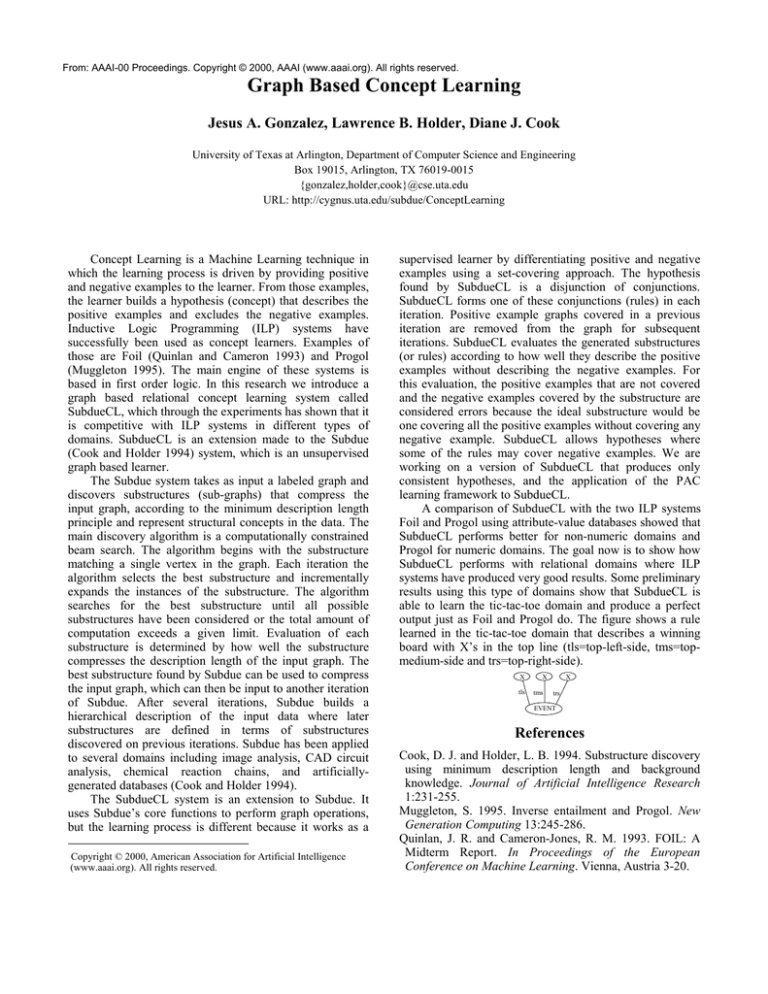
From: AAAI-00 Proceedings. Copyright © 2000, AAAI (www.aaai.org). All rights reserved.
Graph Based Concept Learning
Jesus A. Gonzalez, Lawrence B. Holder, Diane J. Cook
University of Texas at Arlington, Department of Computer Science and Engineering
Box 19015, Arlington, TX 76019-0015
{gonzalez,holder,cook}@cse.uta.edu
URL: http://cygnus.uta.edu/subdue/ConceptLearning
Concept Learning is a Machine Learning technique in
which the learning process is driven by providing positive
and negative examples to the learner. From those examples,
the learner builds a hypothesis (concept) that describes the
positive examples and excludes the negative examples.
Inductive Logic Programming (ILP) systems have
successfully been used as concept learners. Examples of
those are Foil (Quinlan and Cameron 1993) and Progol
(Muggleton 1995). The main engine of these systems is
based in first order logic. In this research we introduce a
graph based relational concept learning system called
SubdueCL, which through the experiments has shown that it
is competitive with ILP systems in different types of
domains. SubdueCL is an extension made to the Subdue
(Cook and Holder 1994) system, which is an unsupervised
graph based learner.
The Subdue system takes as input a labeled graph and
discovers substructures (sub-graphs) that compress the
input graph, according to the minimum description length
principle and represent structural concepts in the data. The
main discovery algorithm is a computationally constrained
beam search. The algorithm begins with the substructure
matching a single vertex in the graph. Each iteration the
algorithm selects the best substructure and incrementally
expands the instances of the substructure. The algorithm
searches for the best substructure until all possible
substructures have been considered or the total amount of
computation exceeds a given limit. Evaluation of each
substructure is determined by how well the substructure
compresses the description length of the input graph. The
best substructure found by Subdue can be used to compress
the input graph, which can then be input to another iteration
of Subdue. After several iterations, Subdue builds a
hierarchical description of the input data where later
substructures are defined in terms of substructures
discovered on previous iterations. Subdue has been applied
to several domains including image analysis, CAD circuit
analysis, chemical reaction chains, and artificiallygenerated databases (Cook and Holder 1994).
The SubdueCL system is an extension to Subdue. It
uses Subdue’s core functions to perform graph operations,
but the learning process is different because it works as a
Copyright © 2000, American Association for Artificial Intelligence
(www.aaai.org). All rights reserved.
supervised learner by differentiating positive and negative
examples using a set-covering approach. The hypothesis
found by SubdueCL is a disjunction of conjunctions.
SubdueCL forms one of these conjunctions (rules) in each
iteration. Positive example graphs covered in a previous
iteration are removed from the graph for subsequent
iterations. SubdueCL evaluates the generated substructures
(or rules) according to how well they describe the positive
examples without describing the negative examples. For
this evaluation, the positive examples that are not covered
and the negative examples covered by the substructure are
considered errors because the ideal substructure would be
one covering all the positive examples without covering any
negative example. SubdueCL allows hypotheses where
some of the rules may cover negative examples. We are
working on a version of SubdueCL that produces only
consistent hypotheses, and the application of the PAC
learning framework to SubdueCL.
A comparison of SubdueCL with the two ILP systems
Foil and Progol using attribute-value databases showed that
SubdueCL performs better for non-numeric domains and
Progol for numeric domains. The goal now is to show how
SubdueCL performs with relational domains where ILP
systems have produced very good results. Some preliminary
results using this type of domains show that SubdueCL is
able to learn the tic-tac-toe domain and produce a perfect
output just as Foil and Progol do. The figure shows a rule
learned in the tic-tac-toe domain that describes a winning
board with X’s in the top line (tls=top-left-side, tms=topmedium-side and trs=top-right-side).
X
tls
X
tms
X
trs
EVENT
References
Cook, D. J. and Holder, L. B. 1994. Substructure discovery
using minimum description length and background
knowledge. Journal of Artificial Intelligence Research
1:231-255.
Muggleton, S. 1995. Inverse entailment and Progol. New
Generation Computing 13:245-286.
Quinlan, J. R. and Cameron-Jones, R. M. 1993. FOIL: A
Midterm Report. In Proceedings of the European
Conference on Machine Learning. Vienna, Austria 3-20.

